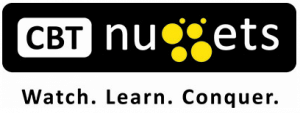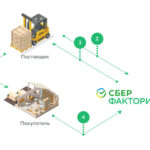Производитель: CBT Nuggets
Год выпуска: 2014
Продолжительность: 07:59:53
Тип материала: Видеоурок
Язык: Английский
Стоимость: 1990 рублей
Описание:
This course is lab-focused and covers the implementation, capturing, and analysis of the technologies from Cisco CCNA (ICND1/ICND2). Each Nugget is designed assist you in creating Cisco networks using GNS3 1.x, and performing protocol analysis using Wireshark. All of this can be done on a single computer without external hardware (no physical routers or switches required). For theory and additional training regarding the technologies implemented in this course, please refer to our ICND1/ICND2 courses here at CBT Nuggets.
Related area of expertise:
- Cisco entry level and intermediate networking
Recommended skills:
- Basic understanding of concepts taught in ICND1/ICND2
Recommended equipment:
- GNS3 v1.x
- Cisco IOS image (12.x or 15x) supported by GNS3
Related certifications:
- CCENT
- CCNA Routing and Switching
Related job functions:
[wpspoiler name="Подробное описание" ]
1. Welcome and Overview (00:05:49)
In this Nugget, Keith shows you how to get the most from this course and explains where this course fits as part of your learning and studies.
2. IPv4 Ethernet Broadcast (00:07:39)
In this Nugget, Keith walks you through creating, capturing, and viewing an IPv4 Ethernet broadcast. The resulting capture file created from this Nugget is available as part of the NuggetLab files for this course.You are strongly encouraged to practice what you watch in all of the Nuggets in this course. Additional Nuggets that focus on GNS3 and Wireshark are available in the CBT Nuggets library.
3. IPv4 Ethernet Multicast (00:10:22)
Why send 50 packets from a server when one will get the job done? Multicast provides the benefit of delivering a single server packet to multiple hosts that are all part of the Multicast "group." In this Nugget, Keith discusses, configures, captures, and analyzes multicast traffic with you. Capture files from this video are included in the NuggetLab files for this course.
4. CDP on Ethernet (00:07:41)
In this Nugget, Keith chats with you about Cisco Discovery Protocol (CDP), and then builds a network topology, tweaks some CDP parameters, and captures and analyzes the capture using Wireshark. The capture file generated from this Nugget is part of the NuggetLab files for this course.
5. IPv4 Telnet (00:08:35)
In this Nugget, Keith walks you though capturing and analyzing the IPv4 protocol called Telnet.
6. IPv4 SSH (00:08:34)
Secure Shell (SSH) is a confidential way to gain remote CLI access compared to the plain text Telnet protocol. In this Nugget, you and Keith lab up, capture, and analyze SSH traffic. The capture and configurations used in this Nugget are included in the NuggetLab files.
7. IPv4 ICMP (00:08:11)
Internet Control Message Protocol (ICMP) is a real-time workhorse used by IPv4. In this Nugget, Keith walks you through the the capture and analysis of ICMP, using GNS3 and Wireshark.
8. IPv4 DNS (00:10:35)
In this Nugget, Keith creates a DNS environment using a Cisco IOS router as a Domain Name System (DNS) server. A DNS request and response are captured and analyzed with Wireshark. The capture file created in this Nugget is included in the NuggetLab files for this course.
9. IPv4 DHCP (00:14:34)
In this Nugget, Keith walks you through creating a Dynamic Host Configuration Protocol (DHCP) sever, and capturing and analyzing the DHCP conversation. Both Broadcast and Unicast DHCP options are explained. Capture files for this Nugget are in the NuggetLab files for this course.
10. IPv4 EIGRP (00:13:26)
In this Nugget, you and Keith add an IPv4 EIGRP configuration to an existing Ethernet topology, and then capture and analyze hellos, updates, and queries. The NuggetLab files for this video include base config for starting topology, commands added during the Nugget, and the capture collected during the Nugget.
You are encouraged to configure and practice what is shown in this Nugget (and other Nuggets in this course) to improve both your Cisco IOS and Wireshark skills.
11. IPv4 OSPF (00:09:51)
In this Nugget, you join Keith to add IPv4 OSPF to a topology and then capture and analyze the traffic using Wireshark. The initial startup configs for the routers and the OSPF configurations (added during the Nugget) are included as part of the NuggetLab files.
12. Cisco IOS Traceroute (00:12:50)
In this Nugget, Keith reviews the basics regarding Cisco IOS Traceroute and then labs up, captures, and analyzes the output using Wireshark. The capture file and the startup configs used in this video are available as part of the NuggetLab files.
13. ARP (00:19:08)
This Nugget includes an overview of Address Resolution Protocol (ARP), adding a Virtual PC using the Virtual PC Simulator as part of GNS3 1.x, and then capturing and analyzing ARP traffic using Wireshark. Startup configs for the topology in this Nugget, along with the Wireshark capture, are available via the NuggetLab files.
14. 802.1q Trunk with IPv4 (00:17:51)
In this Nugget, Keith labs up, captures, and analyzes pre- and post-802.1Q-tagged traffic carrying IPv4 traffic. Packet captures collected in this Nugget, along with the configuration commands used to create the topology, are in the NuggetLab files.
15. EtherChannel (00:13:57)
In this Nugget, Keith reviews some of the benefits of EtherChannel, and then demonstrates labbing it up from scratch using GNS3 1.x. IOS Router switch modules are used for the switching function in this Nugget. The packet captures and configurations used in this Nugget are available as part of the NuggetLab files.
16. Spanning Tree Protocol (STP) (00:22:12)
In this Nugget, Keith demonstrates creating a spanning tree protocol (STP) and Per VLAN STP environment using GNS3 v1.x, and then captures and analyzes the STP using Wireshark. The three packet captures, along with the commands used to create the topology, are included in the NuggetLab files.
17. Broadcast Storm (00:10:48)
In this Nugget, Keith demonstrates how to create, capture, and analyze a broadcast storm in a sample GNS3 topology. The capture file created from this Nugget is available as part of the NuggetLab files.
The configuration of the topology is shown in the Nugget titled: Per VLAN Spanning Tree in the course: "CCNA Hands-On Lab Using Wireshark & GNS3."
18. Topology Change with STP (00:11:52)
This Nugget takes a look at the topology change a layer 2 network goes through when a root port on a switch is no longer available. The three capture files created in this Nugget are in the NuggetLab files. The starting configuration for the topology is from an earlier Nugget called "Spanning Tree Protocol."
19. Root Port Selection in STP (00:15:18)
Non-root bridges and switches each need to determine their root facing forwarding port. In this Nugget, Keith walks you through creating a GNS3 1.x topology to capture and analyze the Bridge Protocol Data Units (BPDUs) used by spanning tree protocol (STP).
20. Inter-VLAN Routing (Ext. Router) (00:13:11)
In this Nugget, Keith demonstrates creating a GNS3 topology using Cisco IOS, a GNS3 generic switch and 2 virtual PCs with inter-VLAN routing. The commands used to build this topology, along with the captures from this Nugget, are in the NuggetLab files.
21. Multi-Layer Switch Inter-VLAN Routing (00:14:10)
In this Nugget, Keith walks you through creating a GNS3 1.x topology to use a multi-layer switch for the inter-VLAN routing. The capture files along with the commands used to configure the topology are available in the NuggetLab files.
22. NTP (00:09:58)
In this Nugget, you join Keith to build a topology in GNS3 1.x, and configure Network Time Protocol (NTP) so that you can analyze it inside of Wireshark. Capture and configuration files are available as part of the NuggetLab files.
23. HSRP (00:17:34)
In this Nugget, Keith shows you how to lab up, capture, and analyze Hot Standby Router Protocol (HSRP). The capture and configuration files for this Nugget are in the NuggetLab files.
24. GLBP (00:20:41)
Gateway Load Balancing Protocol (GLBP) is a Cisco proprietary First Hop Redundancy Protocol (FHRP). In this Nugget, Keith talks with you about how GLBP is different (better) than HSRP, and then demonstrates creating a GNS3 topology to demonstrate capture and analyze GLBP. The capture and configuration documents are available as part of the NuggetLab files.
25. Static NAT (00:19:17)
In this Nugget, Keith walks you through the creation of a GNS3 topology with static Network Address Translation (NAT) and then captures and analyzes the traffic before and after NAT using Wireshark. Base configuration files, along with the two captures created in this Nugget, are part of the NuggetLab files.
26. Dynamic NAT (00:09:57)
In this Nugget, Keith walks you through the configuration and capture of dynamic NAT traffic on the network. This demonstration begins using the base configuration from the Nugget called "Static NAT." Additional configuration commands, as well as the captures from this Nugget, are in the NuggetLab files.
27. Port Address Translation (00:14:59)
In this Nugget, Keith reviews the concept of Port Address Translation (PAT) in a Cisco network, then labs up, and captures, and looks at the results using Wireshark. The starting configuration for this lab is the base configuration used in the previous Nugget, "Static NAT." The configurations used in this Nugget, along with the two capture files created, are available as part of the NuggetLab files.
28. IPv4 GRE (00:21:16)
In this Nugget, Keith walks you through the concept of tunneling with Generic Routing Encapsulation (GRE), and then labs up, captures, and uses Wireshark to look at the traffic. The configuration and capture files from this Nugget are in the NuggetLab files.
29. IPv6 Addresses (00:15:09)
In this Nugget, Keith walks you through creating a GNS3 1.x topology and configuring IPv6 on the topology. Captures, as well as the configuration commands, are included as part of the NuggetLab files.
30. IPv6 L3 to L2 Mapping (00:13:12)
Neighbor Discovery Protocol (NDP) provides many functions to an IPv6 network, including the L3 to L2 mapping discovery. In this Nugget, you lab up an IPv6 topology using GNS3, and capture and analyze Neighbor Solicitation and Neighbor Advertisements as part of NDP. The configuration and capture files are available as part of the NuggetLab files.
31. IPv6 RS and RA (00:06:33)
Router Solicitations (RS) and Router Advertisements (RA) are an important method used by IPv6 to discover how the network and auto configure a host address on that network. The Capture and config files for this Nugget are in the NuggetLab files.
32. IPv6 EIGRP (00:12:22)
In this Nugget, Keith walks you through adding EIGRP to an IPv6 network, and then capturing and analyzing the traffic with Wireshark. The starting configuration for this topology is from a previous Nugget on "IPv6 Addresses." Additional EIGRP related configurations and the capture file for this Nugget are in the NuggetLab files.
33. IPv6 OSPF (00:11:00)
In this Nugget, Keith walks you through configuring and analyzing IPv6 OSPF using GNS3 and Wireshark. The base configuration used for this Nugget is from the previous "IPv6 Addresses" Nugget. The capture file and OSPFv3-related commands used in this Nugget are available in the NuggetLab files.
34. Frame Relay (00:16:49)
In this Nugget, Keith walks you through how to configure a GNS3 1.x IOS router to act as a frame relay switch, and then capture and look at the traffic using Wireshark. The configuration commands along with the two capture files are available in the NuggetLab files.
35. HDLC (00:11:46)
In this Nugget, Keith walks you through building a GNS3 1.x topology, then captures and analyzes the HDLC headers in Wireshark. The configuration and capture files are included as part of the NuggetLab files.
36. PPP and CHAP (00:09:15)
In this Nugget, you add PPP and CHAP to the topology created in a previous Nugget on HDLC. The capture and configurations used in this Nugget are available as part of the NuggetLab files.
37. IPsec VPNs (00:13:31)
In this Nugget, you create an IPsec topology in GNS3, and then capture and view the packets in Wireshark. The configurations and captures collected in this Nugget are available as part of the NuggetLab files.
[/wpspoiler]


